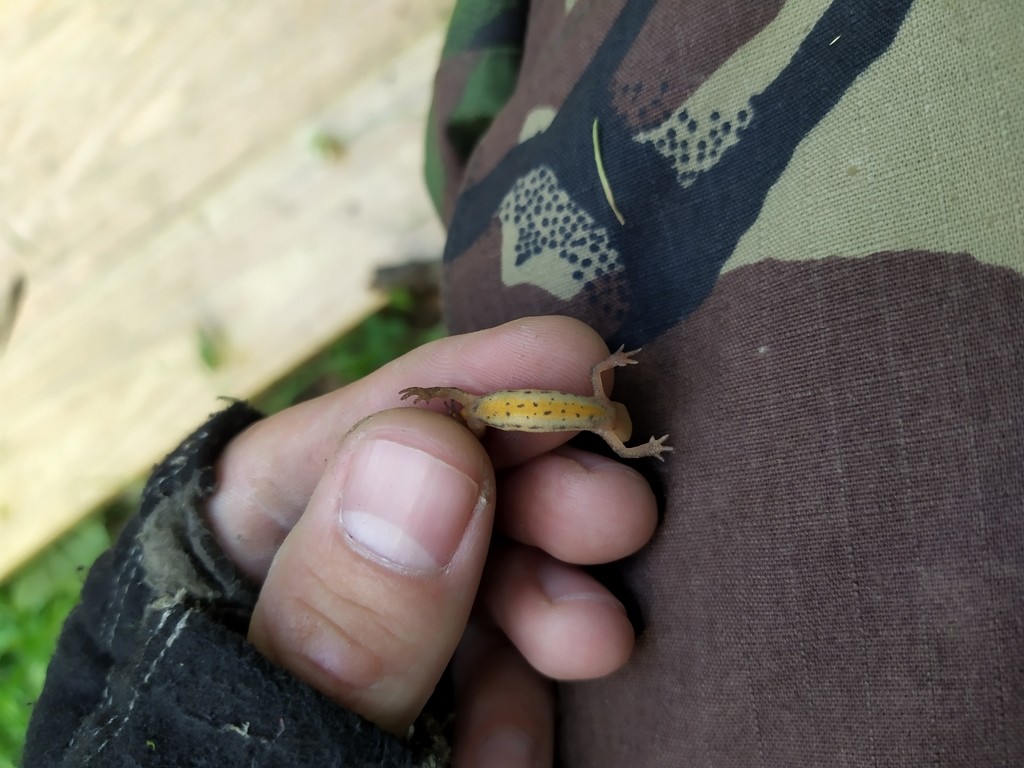 How big do smooth newt grow?
How big do smooth newt grow?
How big do smooth newt grow?
Outside the breeding season, male and female smooth newts are hard to distinguish – both sexes are of similar size (roughly 10 cm head-to-tail length), and a similar pale brown to yellow colouration. Their main visible differences are two – the male newt has a single black line running down the centre of the spine, the female has two parallel lines on either side of the centre. On closer inspection, the male's cloaca is very distended, whilst the female's is nearly invisible. During the breeding season, the male becomes darker than the female, and develops a tall, wavy, translucent crest along the spine and tail, with dark spots covering the rest of the body, including the belly, which becomes a far more vivid pink or orange colour than it is in winter and autumn. The female also develops spots, but not on the belly, which is paler than those of the males, and they are generally smaller. The female does not develop a crest. Smooth newts have paddle-like tails for increased swimming speeds. The nominal subspecies, L. v. vulgaris, is found in the United Kingdom and Ireland. Females and nonbreeding males are pale brown or olive green, often with two darker stripes on the back. Both sexes have orange bellies, although paler in females, which is covered in rounded black spots. They also have pale throats with conspicuous spots. This helps to distinguish them from palmate newts that have pale unspotted throats, and with which they are often confused. When on land, they have velvety skin. During the breeding season, male smooth newts develop a continuous wavy (rather than jagged) crest that runs from their heads to their tails, and their spotted markings become more apparent. They are also distinguishable from females by their fringed toes.
People often ask
Related Searches
Scientific Classification
Phylum
Chordates Class
Amphibians Order
Salamanders Family
True salamanders Genus
Lissotriton Species
Smooth newt 